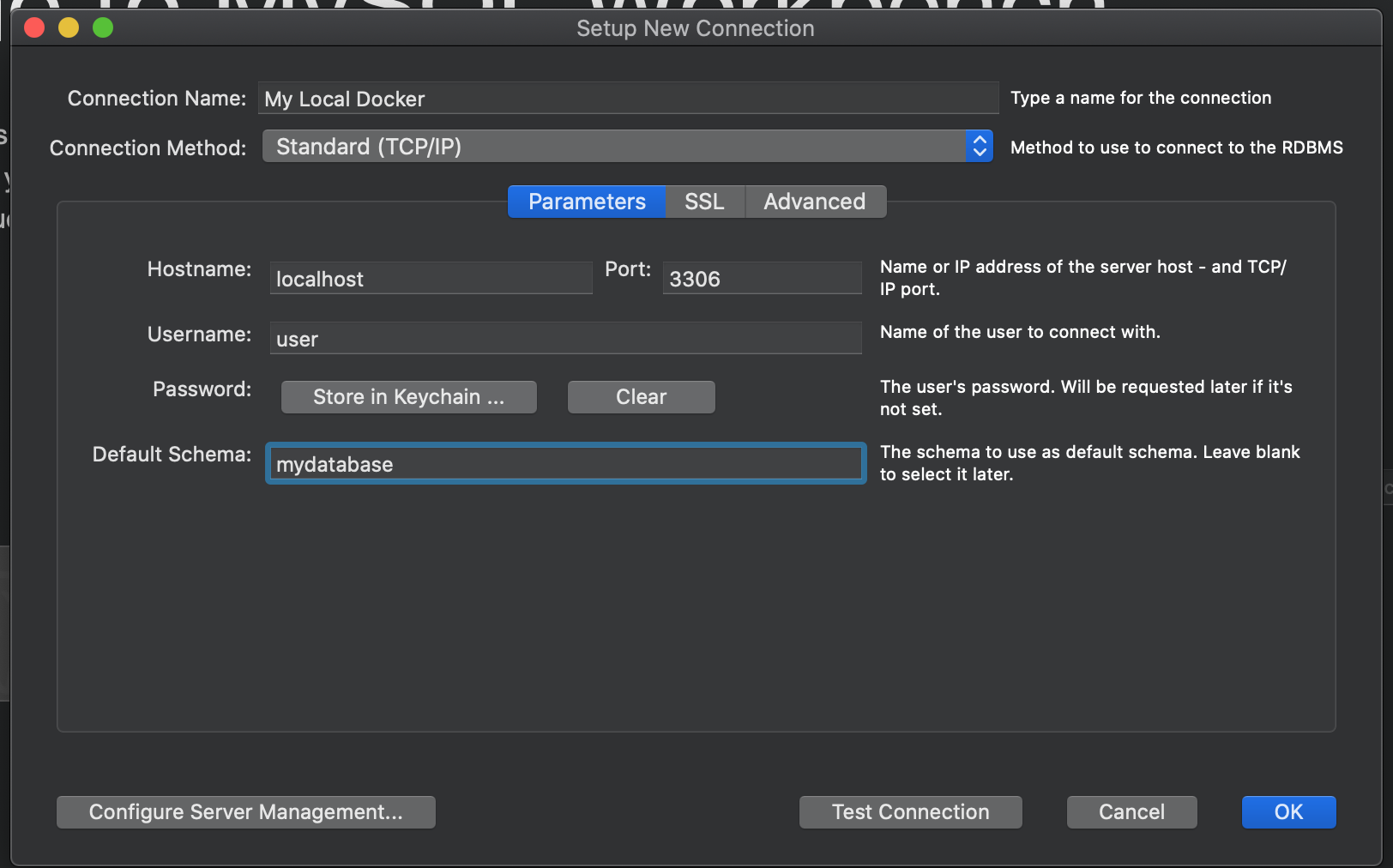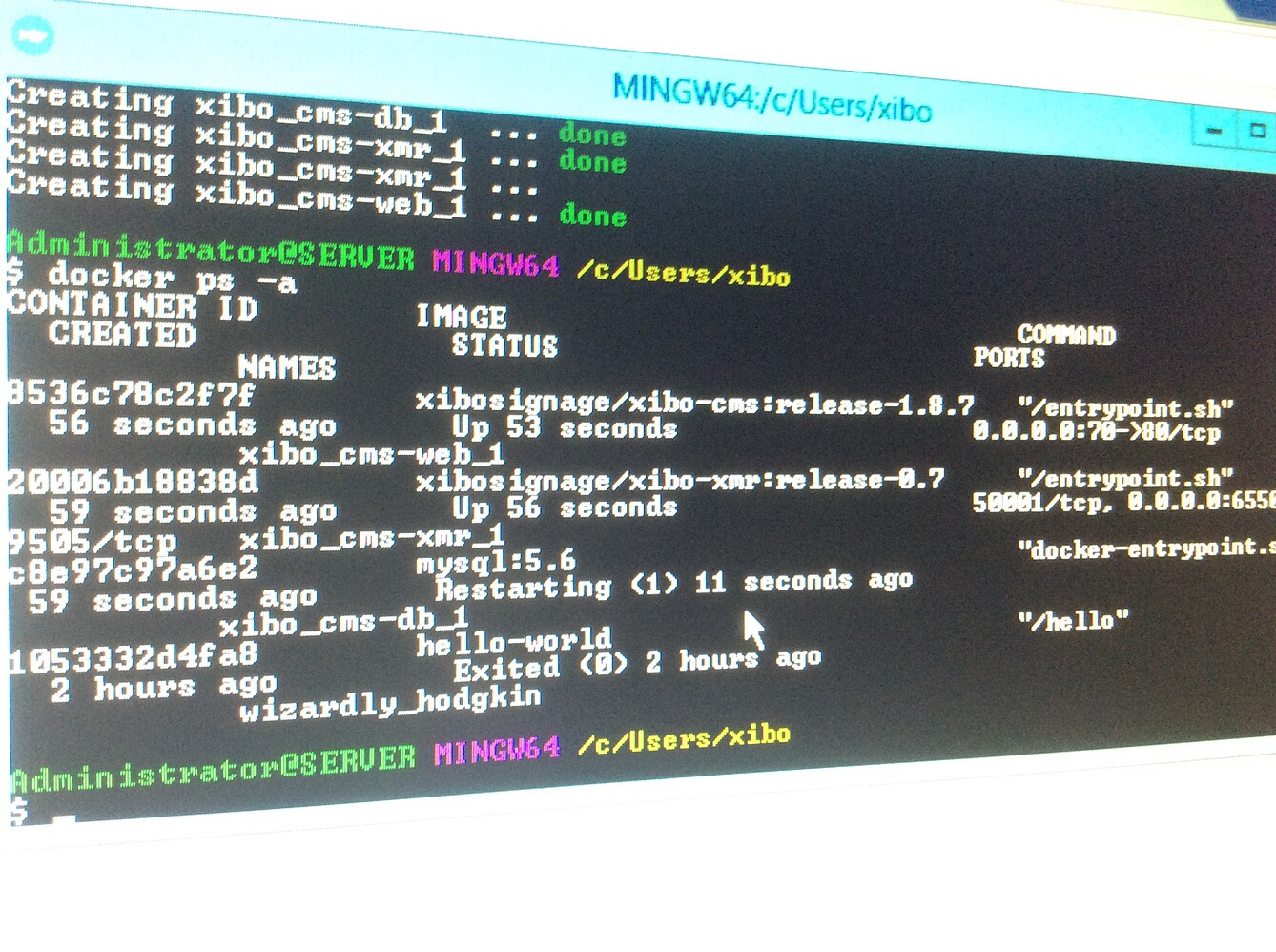

- Starting mysql database server mysqld docker mysql update#
- Starting mysql database server mysqld docker mysql password#
In Debian servers, there is a special MySQL user called “ debian-sys-maint“.ĭuring the installation, MySQL generates a random password for “ debian-sys-maint” and stores its credentials inside the file /etc/mysql/debian.cnf. But, server did not accept this password. Since, there was a part that stated “ using password: YES“, it means that the password was correct. Here, it showed an additional error that there was access restriction for the MySQL user. usr/bin/mysqladmin: connect to server at 'localhost' failedĮrror: 'Access denied for user (using password: YES)' Starting MySQL database server: mysqld already running. Stopping MySQL database server: mysqld failed! The typical error message was : # /etc/init.d/mysql restart Recently, in a Debian server, mysqld failed to restart after copying the databases. And, the changes will be effective, only if the restart is successful. MySQL server often needs restart in various situations like data migration, version upgrade, etc. What causes “Stopping mysql database server: mysqld failed!” error? Today, let’s discuss on the top causes for this error and how we fix it. And, sometimes this restart can fail with errors like “Stopping mysql database server: mysqld failed!”Īt Bobcares, we help server owners to fix MySQL server errors as part of our Support Services for Web Hosts. They need continuous updates to avoid performance problems.Īfter any configuration change, MySQL server needs a restart to bring the changes into effect. This is easy enough to do by hand with docker ps and docker inspect, but you could also script it: CONTAINER_ID = $(docker ps | grep mysql | awk '' ) IP = $(docker inspect $CONTAINER_ID | python -c 'import json,sys obj=json.load(sys.Database servers functions as the backbone for websites. In order to do this, we need to figure out the container’s ip, and to find that, we need our container’s id. Let’s build and run it! docker build -t mysql. Since separate lines in a Dockerfile create different commits, and commits only retain filesystem state (not memory state), we need to cram both commands into one commit: RUN /usr/sbin/mysqld & \Įcho "GRANT ALL ON *.* TO IDENTIFIED BY 'changeme' WITH GRANT OPTION FLUSH PRIVILEGES" | mysql In order to add an account, we need our mysql server to be running. We need to add an admin account to administer things from outside of the container. (Technically we could just delete the line for the same effect, but this is more explicit.)Įven though mysqld is listening everywhere now, we still can’t log in because the root user only has access from localhost. We can add the appropriate sed command to our Dockerfile after we’ve installed mysql-server. I prefer this way so that I know that I am getting the most up to date config from my install, and just updating what I need to. We could just start maintaining the /etc/mysql/my.cnf file and add it to our container with our Dockerfile: ADD.

Starting mysql database server mysqld docker mysql update#
To do this, we need to update the bind-address in /etc/mysql/my.cnf from 127.0.0.1 to 0.0.0.0 (have mysqld bind to every available network instead of just localhost.)

since our data is getting written inside the container, if we lose the container or need to change something about it (like apply a security update), we lose our data.įirst step is to make our mysql server listen to more than localhost so that we can connect from outside of our container.we only have a root user, and the root user is only allowed to log in from inside the container.mysql is listening on 127.0.0.1 so we can only connect from inside the container.This would work, but it wouldn’t be very useful.

Now we have a fully functioning container that we can run like so: docker run -d -p 3306:3306 mysql Then build and tag it: docker build -t mysql. RUN echo "deb precise main universe" > /etc/apt/sources.list RUN dpkg-divert -local -rename -add /sbin/initctl Oh, and you can jump to the gist (which has the files for building the container as well as some scripts to build and run it) if things get too boring or convoluted. Still not production ready, but good enough for hacking ) I’m going to start with that simplistic example (with ephemeral database storage and no way to connect) and build on the example until we have something useful. On the surface, creating a MySQL container for Docker is pretty easy, but if you want to connect in (not sure what a mysql server that didn’t allow that would be good for) and decouple your databases from your container (I’m assuming you don’t want those to go away with your container) then there are a few problems to sort out.


 0 kommentar(er)
0 kommentar(er)
